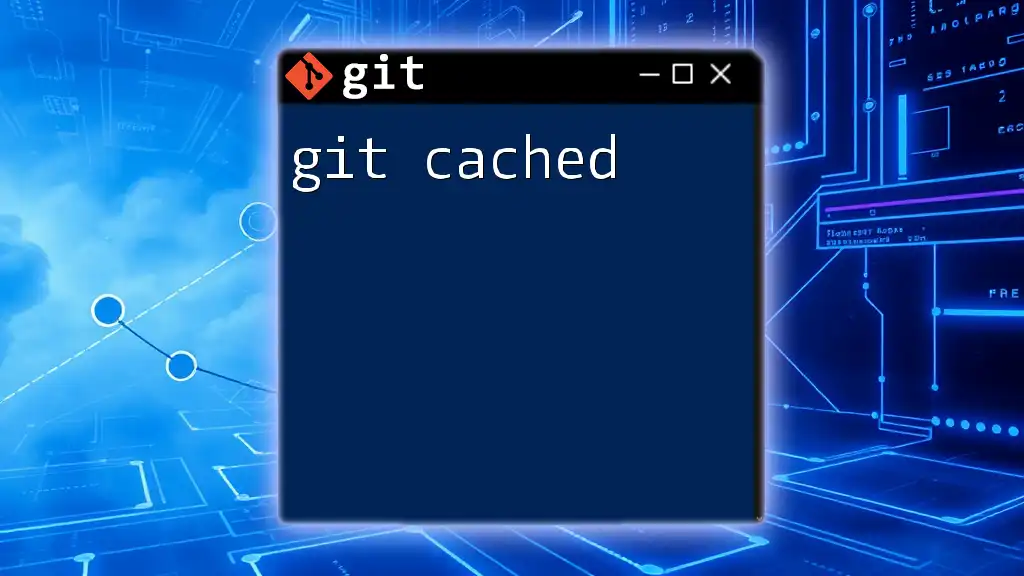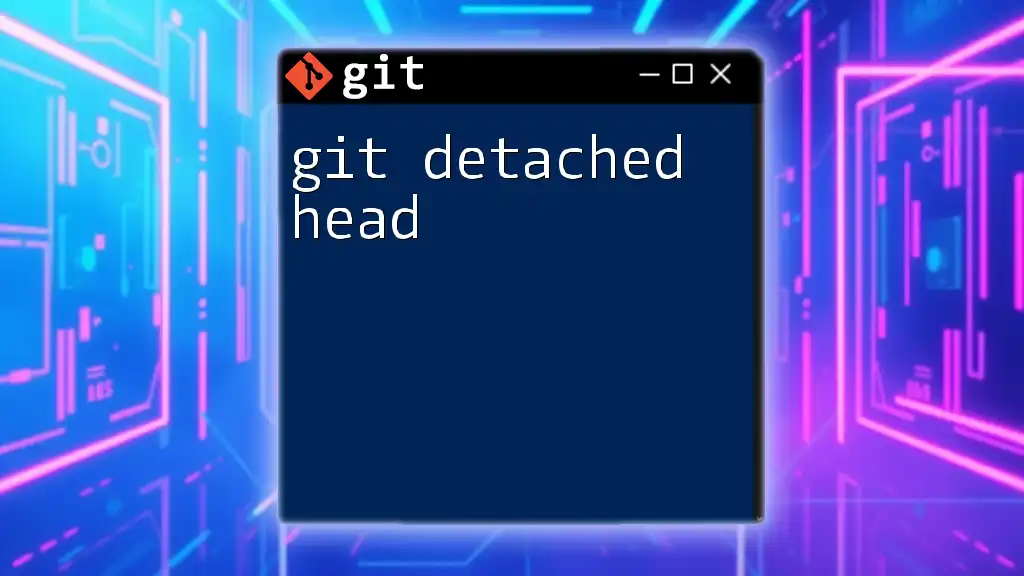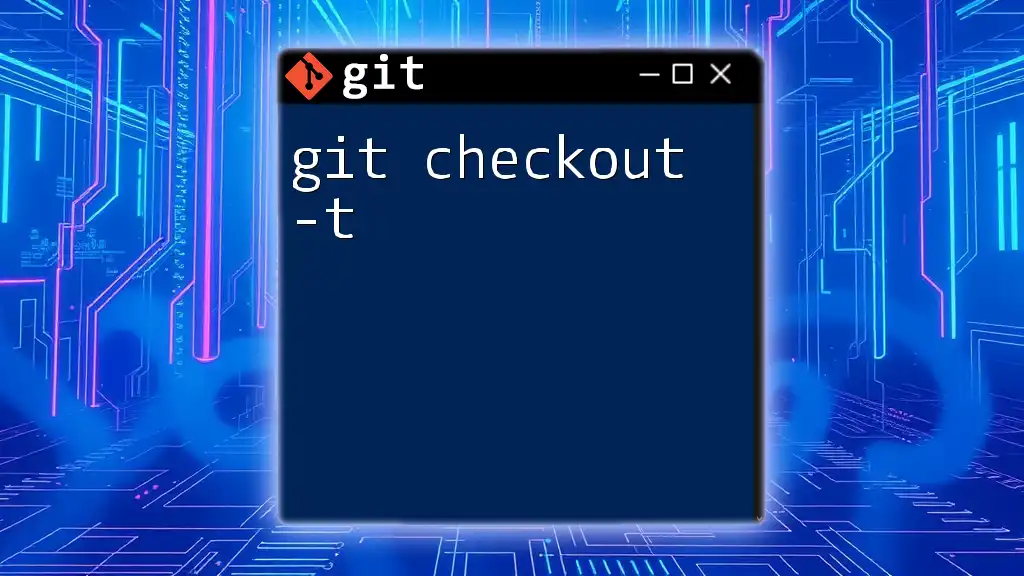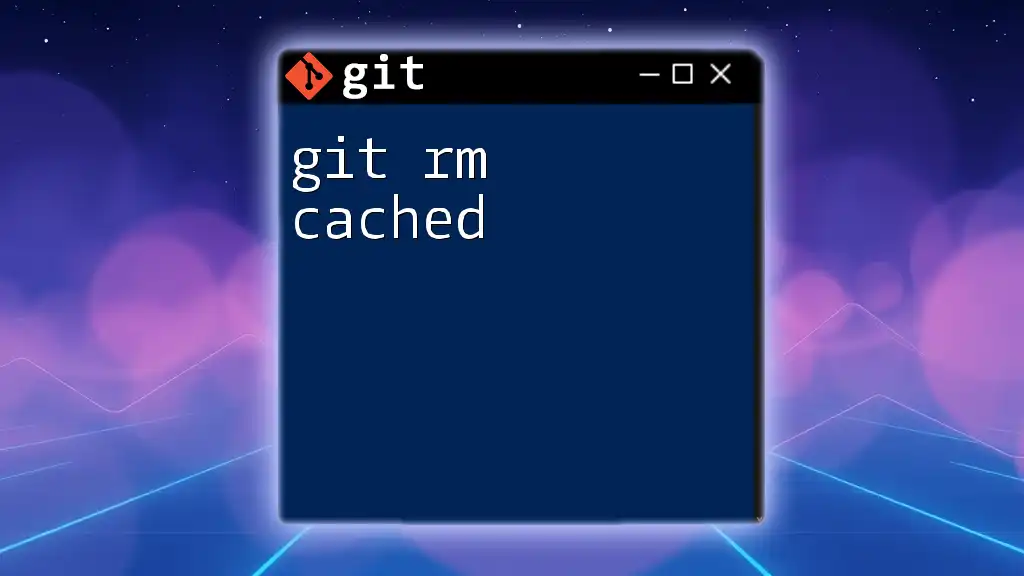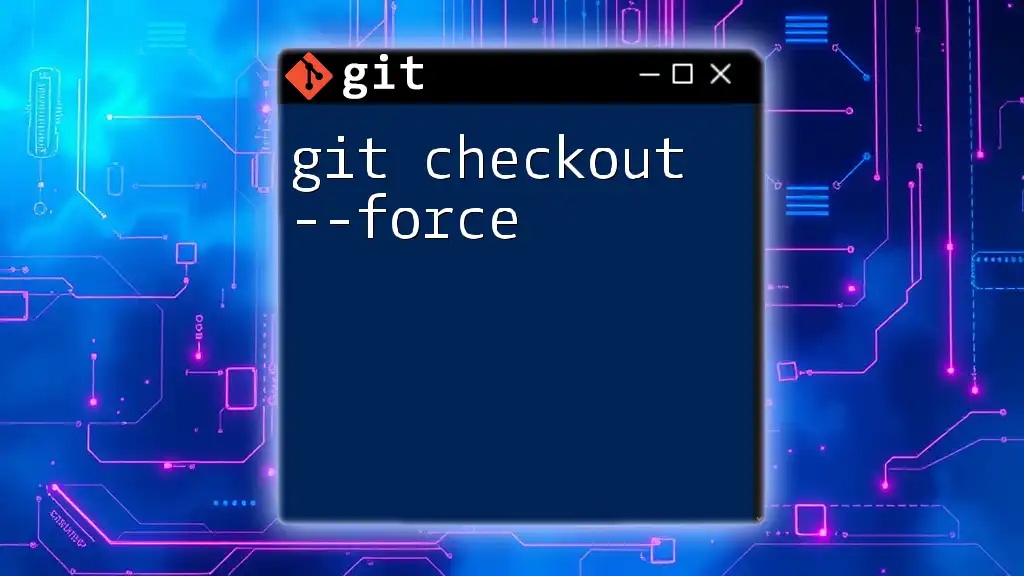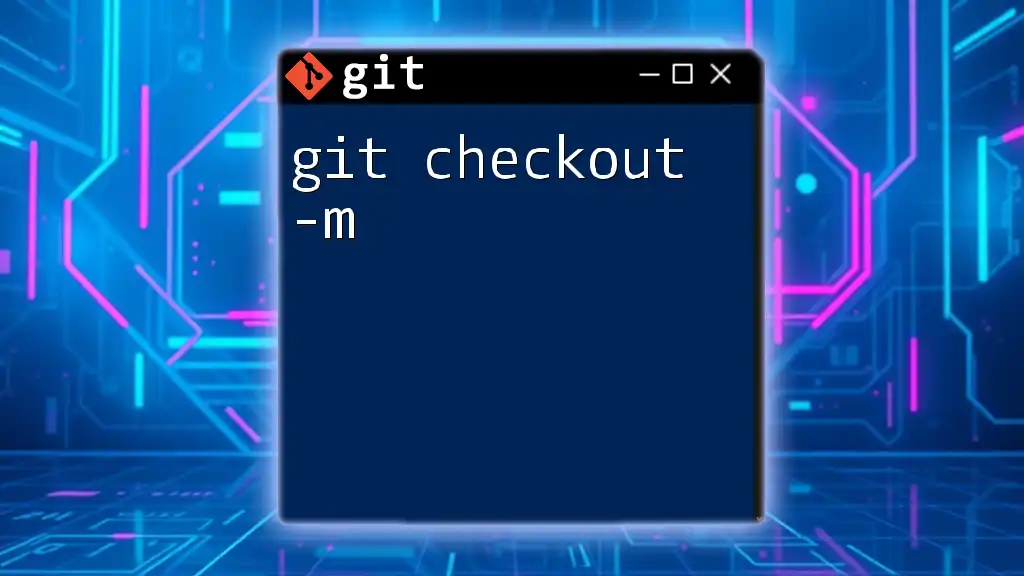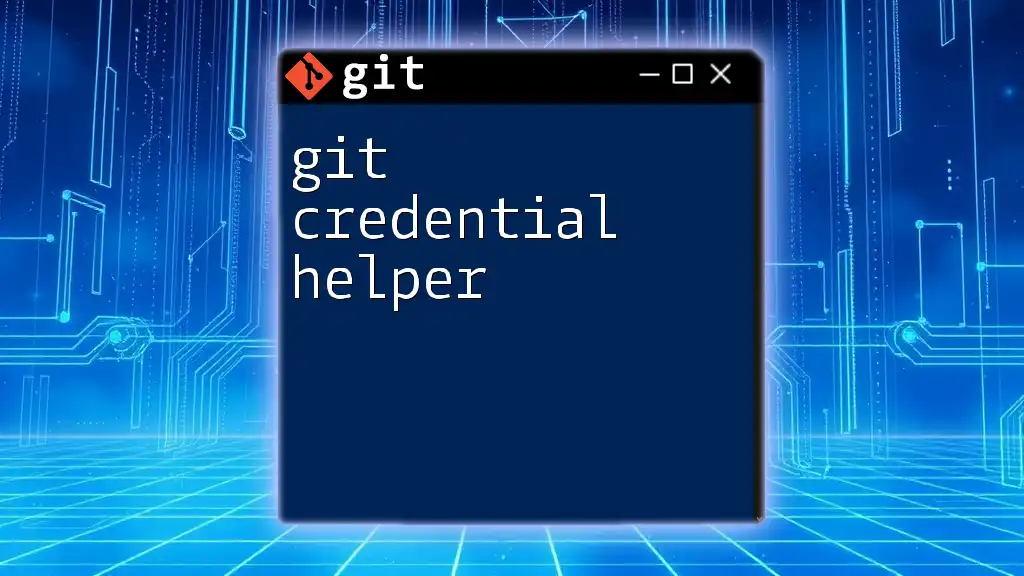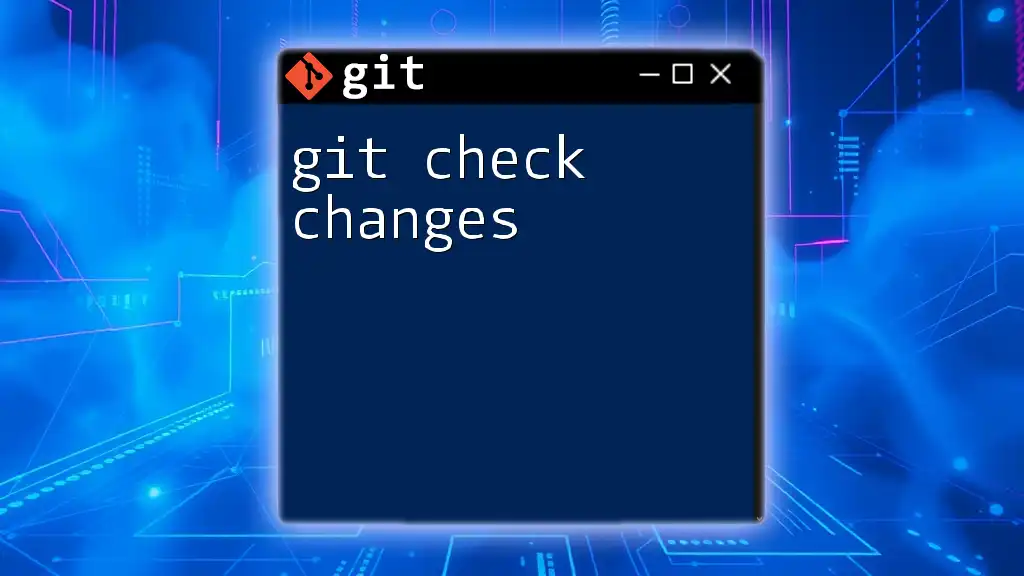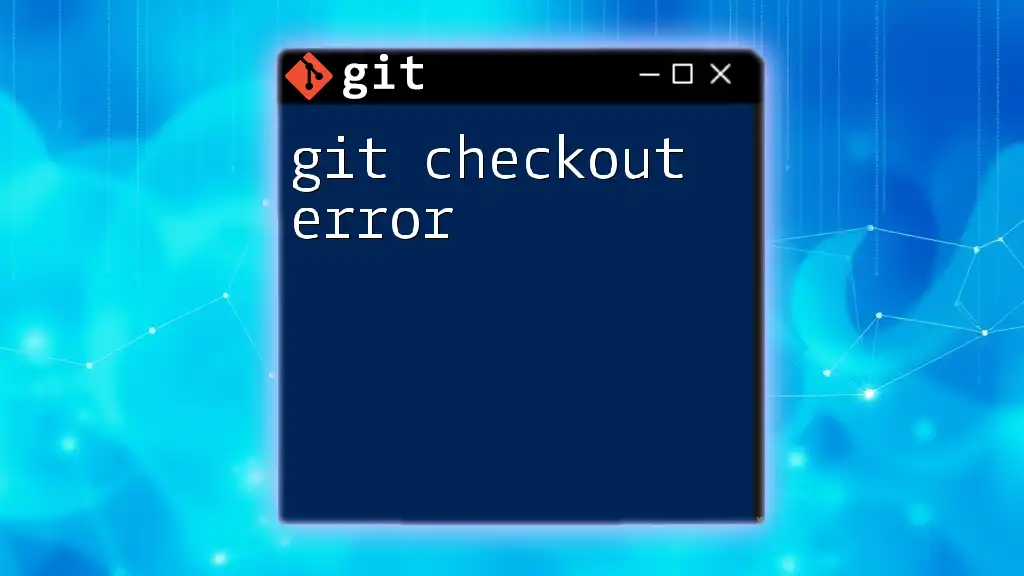The `git cached` option is commonly used in Git commands to specify that changes should be made only to the staging area (index) without affecting the working directory, typically applied in commands like `git add --cached`.
git add --cached filename.txt
What is the Git Index?
The Git index, commonly referred to as the staging area, acts as a bridge between your working directory and the repository. It serves a dual purpose: showing which files are staged for commit and holding the changes that will be part of the next commit. Understanding the Git index is crucial because it helps you manage your commits more effectively.
In the context of Git, caching refers to the process of temporarily storing changes that you've made to files in your working directory. By caching changes, you can prepare them for the next commit without modifying the actual files in your working directory. This functionality is primarily managed by specific commands, notably `git add --cached`.
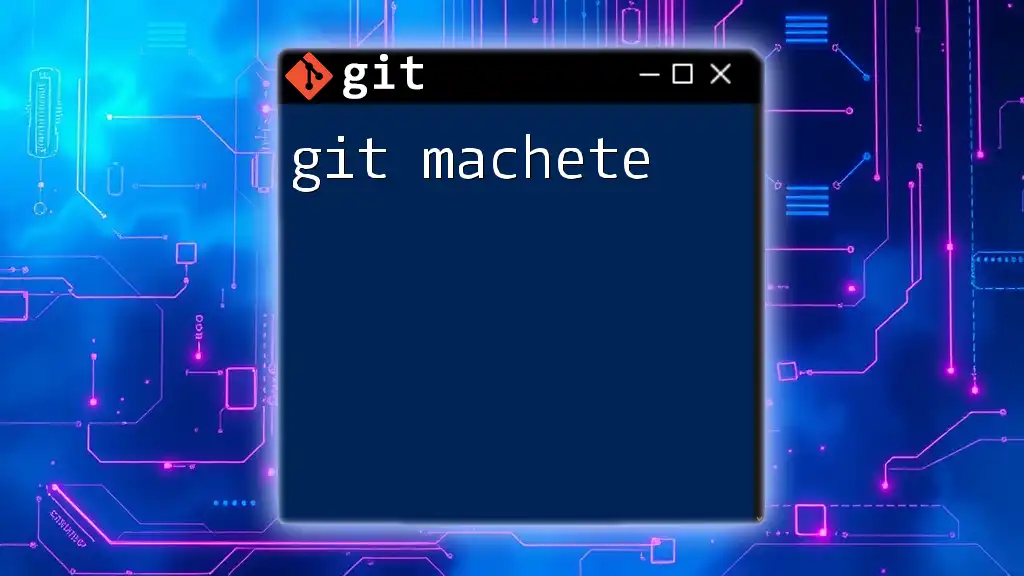
Understanding the `git add --cached` Command
What the Command Does
The command `git add --cached` is primarily used to add changes in your working directory to the index without affecting the actual state of those files. This is a crucial distinction from a standard `git add`, which stages changes for the next commit while potentially altering your working directory depending on how Git is configured.
In essence, using `git add --cached` allows you to:
- Stage files that you want to commit while ignoring local changes.
- Keep the working directory intact, which is particularly useful in collaborative environments where changes may need to be reviewed before being officially committed.
Basic Syntax
The basic syntax for using the command is straightforward:
git add --cached <file>
This structure allows you to specify a single file that you wish to stage for commit while leaving any other changes in your working directory untouched.
Example Use Case
To illustrate how `git add --cached` works, let's go through a step-by-step example.
-
Creating a new file: Begin by creating a new file named `example.txt` and add some initial content.
echo "Hello World" > example.txt -
Modifying the file: Now, let's modify `example.txt` by adding another line.
echo "This is a new line." >> example.txt -
Staging changes using `git add --cached`: If you decide that you only want to stage the original content without including recent modifications, you can do the following:
git add --cached example.txt
By executing this command, you're telling Git to stage the original version of `example.txt`, while the changes remain in your working directory.
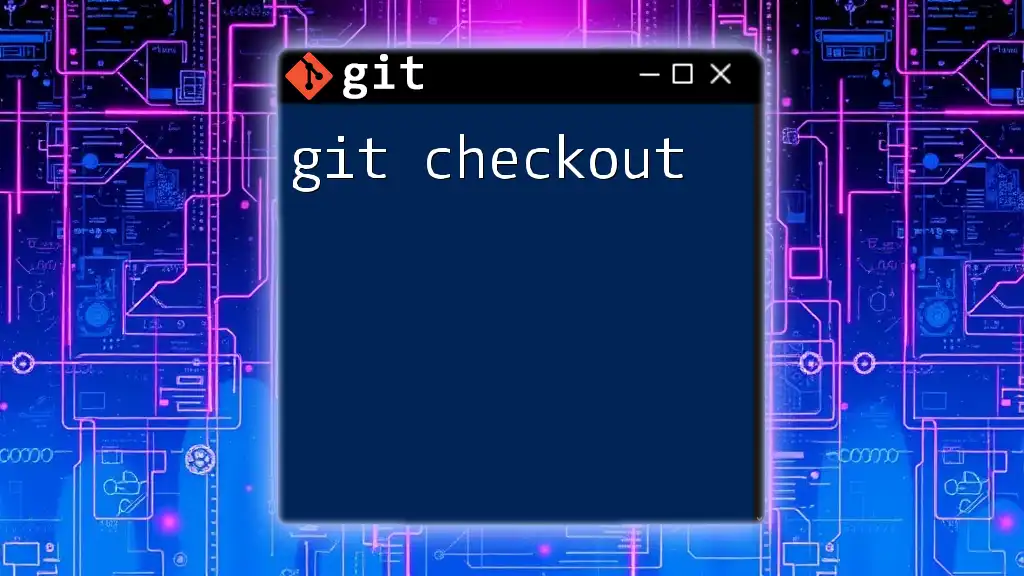
When to Use `git add --cached`
Use Cases
There are several scenarios where using `git add --cached` becomes invaluable:
-
Undo Changes: Suppose you accidentally modify a file and don't want to include those changes in your next commit. By using `git add --cached`, you can effectively exclude the unwanted modifications from staging.
-
Partial Staging: You might want to stage only specific changes within a file, not the entire file itself. This capability is useful for keeping commits focused and manageable.
-
File Recovery: If you’ve deleted or altered content unintentionally, you can regain control over what gets committed by staging the cached version.
Detailed Examples
Example 1: Undoing Changes
Let's say you've created `example.txt`, staged it, and then modified it again before realizing that the modifications should be excluded from your next commit. You can revert the staged changes like this:
echo "Hello World" > example.txt
git add example.txt
# Modify the file
echo "This modification is not needed." >> example.txt
git add --cached example.txt
In this case, the indexed version is the original "Hello World," but the working directory has the new unwanted line.
Example 2: Staging Part of a File
You can also use Git's interactive mode to make the staging process more granular:
git add -p <file>
This command allows you to interactively review changes and decide which parts of the file you want to stage.
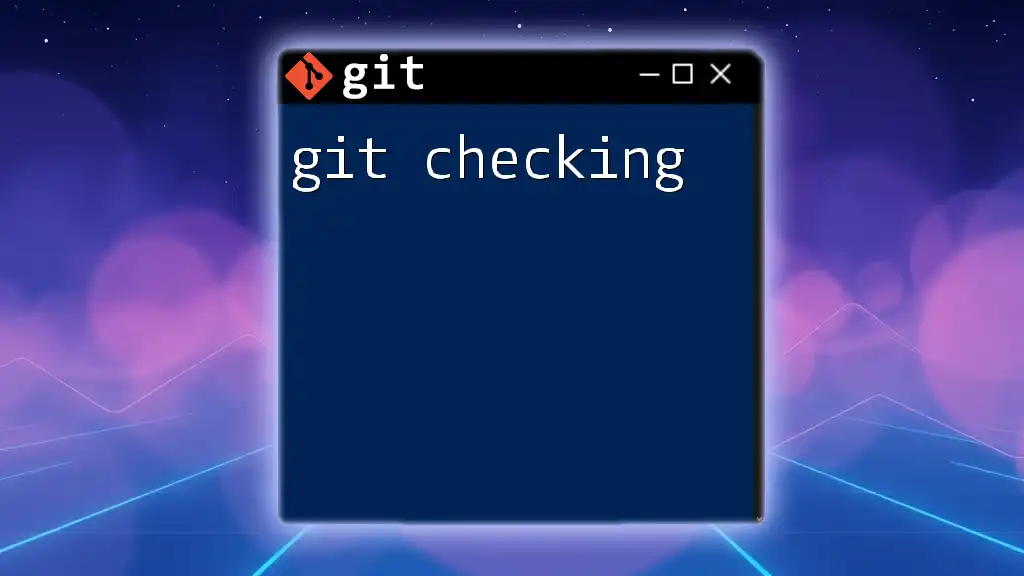
Exploring Cached Changes
Viewing Cached Changes
To see what changes you've staged in the index, you can use the following command:
git diff --cached
This command outputs the difference between the cached version in the index and the last committed version. Understanding this output is key to ensuring you're committing exactly what you intend.
Comparing Cached Changes with Working Directory
To compare the changes you’ve staged (cached) with the current state of your working directory, you can run:
git diff <file>
This is a powerful way to verify that everything is as you intend before proceeding with the commit.

Common Pitfalls and Troubleshooting
Misunderstandings About `git add --cached`
New users often misunderstand that `git add --cached` will not affect the working directory. This command is intended specifically for staging without altering current files. Misapplication can lead to confusion about what changes are staged for commit versus what remains modified in the working directory.
Fixing Staged Changes
If you mistakenly stage a file you'd rather not commit yet, it's simple to unstage it:
git reset <file>
This command removes the file from the index, allowing you to adjust or modify it as needed before any future commits.
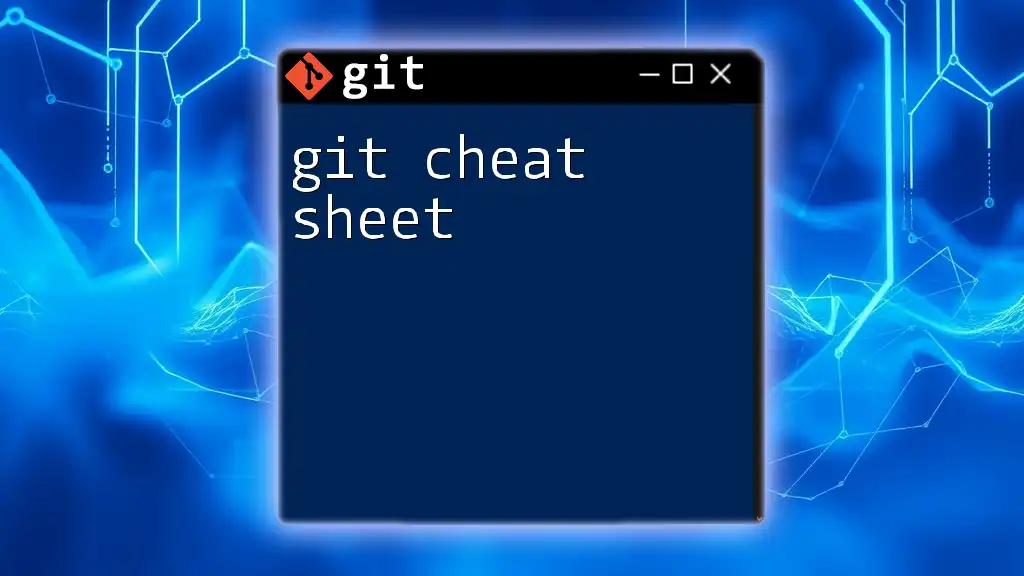
Advanced Topics
Using the Git Stash with Cached Changes
Understanding how to use the Git stash with cached changes can enhance your Git fluency. The stash allows you to temporarily save changes that aren’t yet ready to commit. Use the following command to stash changes while keeping some files cached:
git stash push -k
Customizing `git add`
An effective way to manage which files get cached is by using the `.gitignore` feature. By specifying files and directories in `.gitignore`, you can avoid the hassle of accidentally staging files you do not wish to commit. Additionally, taking time to review your changes before they are cached can lead to more efficient workflows and cleaner commit history.
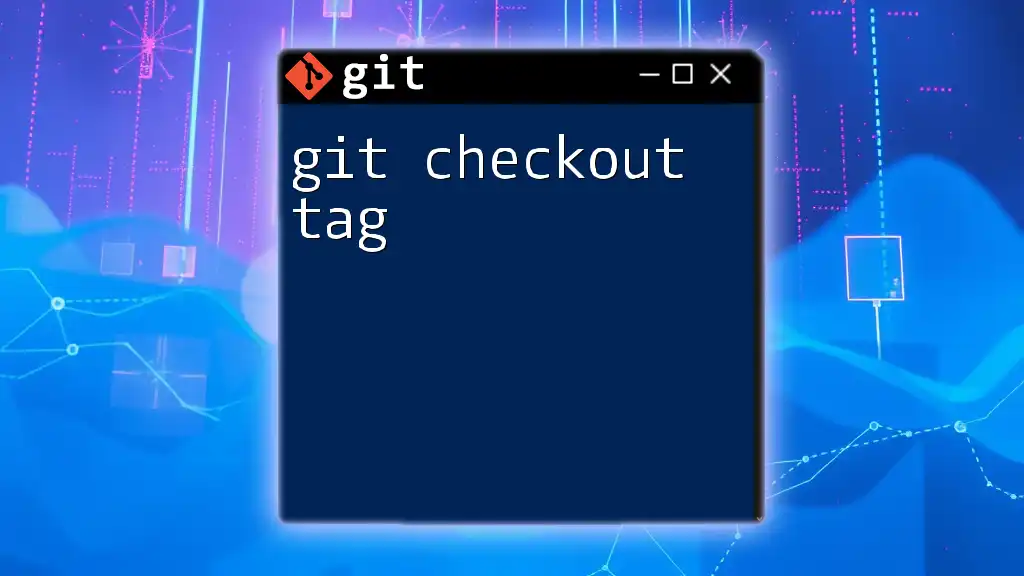
Conclusion
Mastering the `git cached` operations through the command `git add --cached` is crucial for efficient version control. By understanding the role of the Git index and the nuances of staging, you can ensure that your commits are clean, intentional, and organized. The flexibility of this command allows developers to manage their workflow efficiently, making it an essential tool in the Git toolkit.
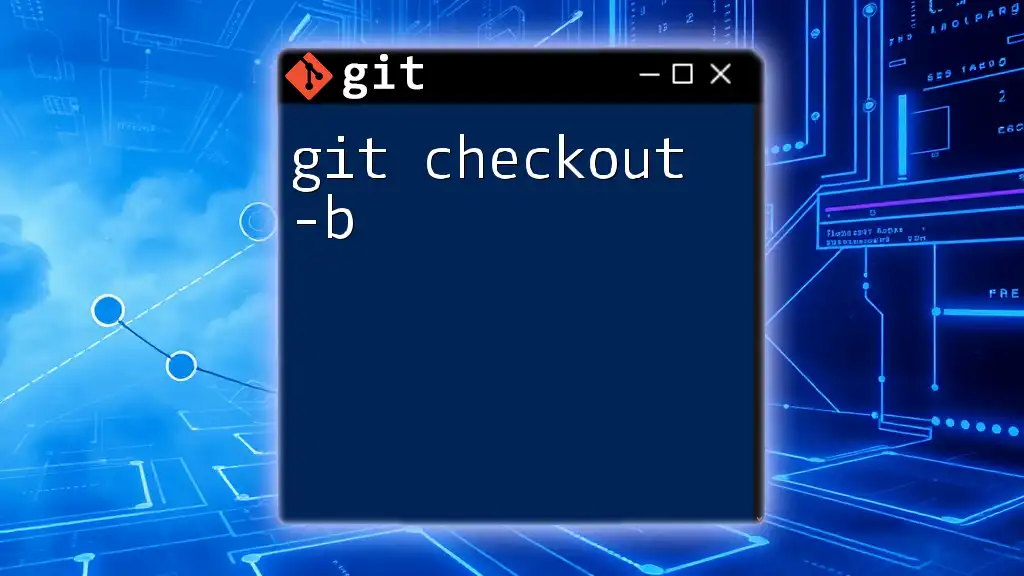
Additional Resources
For those looking to expand their knowledge on Git commands, the official [Git documentation](https://git-scm.com/doc) serves as an excellent reference point. Various online courses and tutorials are also available to deepen your understanding, while community forums can provide support and shared experiences.
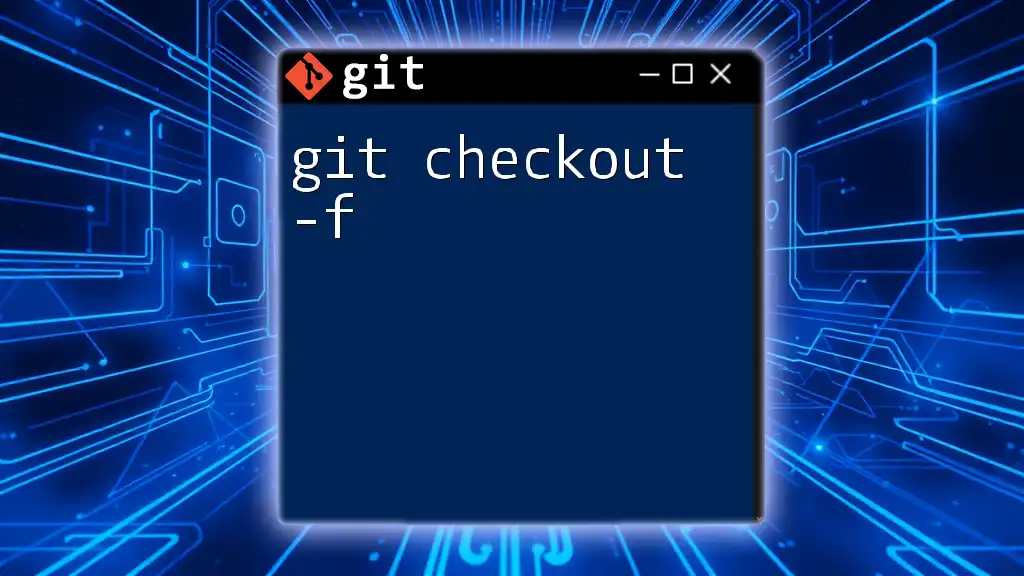
Call to Action
Share your experiences with `git cached` below, and join us in refining your Git skills! Don't forget to subscribe for more tips and tricks to optimize your version control practices.

